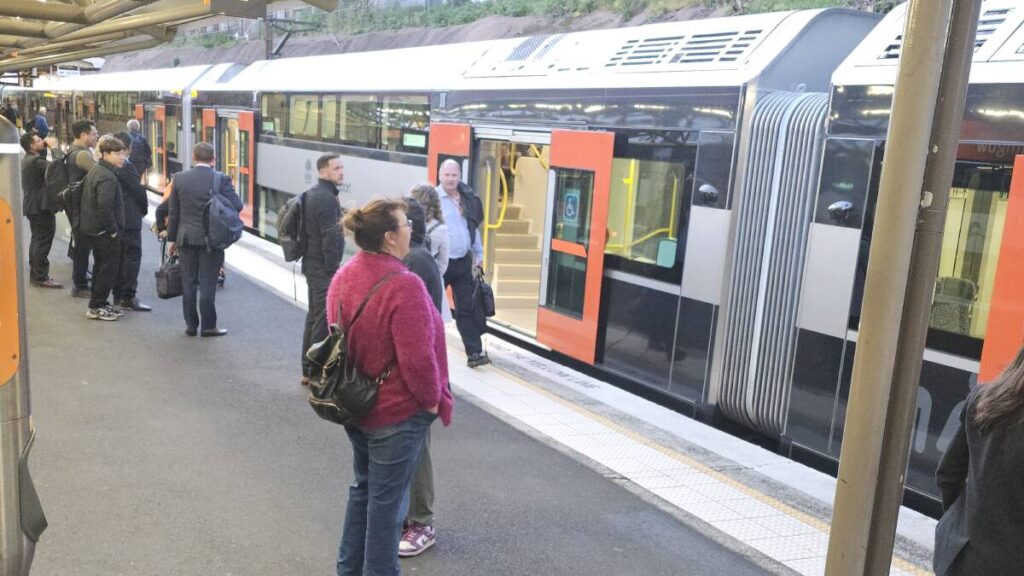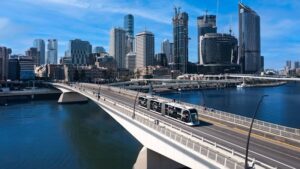
URGENT UPDATE: The first passengers have boarded the brand-new Mariyung train fleet on the Blue Mountains line, marking a significant transformation in commuter travel. At 6:24 AM today, a crowd of enthusiastic train lovers and daily commuters embarked from Lithgow Station, heading towards Central in Sydney.
Starting October 13, two 10-car trains will operate, with plans for an additional two 10-car trains and three six-car trains to be deployed by the end of the month. The complete fleet of 12 10-car trains is set to be operational by the end of 2026, gradually phasing out the older V-sets.
Named after the Darug word for Emu, the Mariyung trains offer flexibility with configurations of four-car, six-car, eight-car, or ten-car setups, accommodating over 820 passengers in a single 10-carriage train. These modern trains are equipped with cutting-edge safety technology, including CCTV systems to monitor platform-train interactions, ensuring commuter safety.
Passengers can expect enhanced comfort with two-by-two seating, improved accessibility features for those with mobility challenges, digital screens for announcements, mobile device charging stations, and dedicated areas for luggage, prams, bicycles, and wheelchairs.
The Mariyung trains made their maiden passenger journey from Newcastle in December 2024, where they received a warm reception from local commuters. However, the rollout has not been without its controversies. Since their announcement by the previous Coalition government in 2015, the plans have faced criticism, particularly regarding modifications needed for the Blue Mountains rail line to accommodate these Korean-built trains.
Despite some commuter dissatisfaction over fixed seating arrangements, Transport for NSW defended the choice, emphasizing that comfort and seating amenities were prioritized based on customer feedback.
As the new Mariyung trains begin regular service, commuters are encouraged to share their experiences and feedback. Stay tuned for further updates as more trains are introduced and the full fleet begins operation. This marks a new chapter in the evolution of transport for the Blue Mountains region, significantly enhancing convenience and accessibility for travelers.






